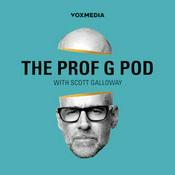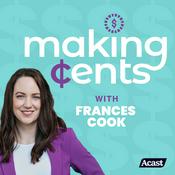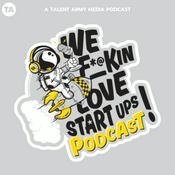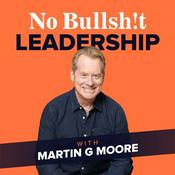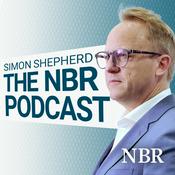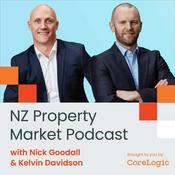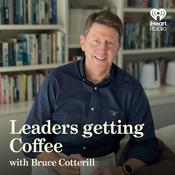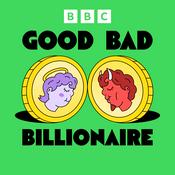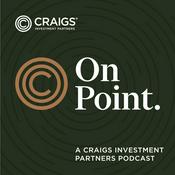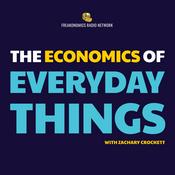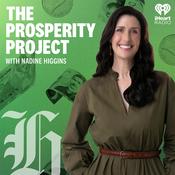322 episodes

#321 Carol Roth: America's Broken Fiscal Foundation & The Inflation That's Coming
22/12/2025 | 50 mins.
Carol Roth, a “recovering” investment banker, financial television commentator, entrepreneur, and two-time New York Times best-selling author, joins Julia La Roche again for episode 321. Carol delivers a sobering assessment of America's broken fiscal foundation with debt-to-GDP over 120%, explaining why the K-shaped economy is creating a non-merit-based divide driven by policy and the administrative class wealth transfer. She discusses the wealth paradox - despite abundance, Americans are more stressed than ever due to housing, education, and healthcare costs - and predicts inflation will be the release valve for our debt crisis. Roth shares her bullish thesis on gold and precious metals as central banks shift away from US Treasuries, explains why the Fed's tools are now irrelevant in this fiscal dominance era, and reveals her predictions for 2026 including decoupling from European allies, Fed chaos, and wild out-of-the-box policies. This episode is brought to you by VanEck. Learn more about the VanEck Rare Earth and Strategic Metals ETF: http://vaneck.com/REMXJuliaLinks: You Will Own Nothing: https://www.carolroth.com/nothing/ Follow Carol Roth on X: https://x.com/caroljsrothTimestamps: 00:00 Intro and welcome Carol Roth00:57 Big picture macro view: Broken fiscal foundation04:07 K-shaped economy debate and wealth paradox11:46 Administrative class wealth transfer problem18:33 Is Trump going to fix the broken fiscal foundation?24:37 Do rate cuts help everyday Americans?30:51 Gold as hedge and insurance policy37:50 "You Will Own Nothing" - what's changed since 202345:33 Predictions for 202648:58 Wrap up and where to find Carol

#320 Chris Whalen: How To Really Reform The Fed
20/12/2025 | 33 mins.
Chris Whalen, chairman of Whalen Global Advisors and author of The Institutional Risk Analyst blog, joins The Julia La Roche Show for "The Wrap with Chris Whalen." In this episode, Chris Whalen breaks down why Kevin Hassett may have blown his chances for Fed Chair by walking back Trump's views, discusses Kevin Warsh as the emerging frontrunner, and explains his reform proposal to return to a decentralized Fed with 15 district banks focused solely on sound money. He reveals why Trump's rhetoric about interest rates is backfiring (pushing the 10-year UP instead of down), predicts a home price correction in 2027-28, and explains why 3% inflation is now the new target. Whalen also discusses why gold and silver are still in early innings, how commercial real estate pain is being quietly resolved in the background, why good bank numbers mask concerning private credit risks, and answers a viewer question about BOJ rate hikes potentially triggering a broader correction.Links: The Institutional Risk Analyst: https://www.theinstitutionalriskanalyst.com/ https://www.theinstitutionalriskanalyst.com/post/theira785Inflated book (2nd edition): https://www.barnesandnoble.com/w/inflated-r-christopher-whalen/1146303673Twitter/X: https://twitter.com/rcwhalen Website: https://www.rcwhalen.com/ https://international-economy.com/TIE_Su25_Whalen.pdfTimestamps:00:00 Welcome Chris Whalen01:10 Kevin Hassett: Did he blow his chances for Fed Chair?03:38 Reforming the Fed: Decentralized model vs FDR's changes04:11 How decentralization would change Fed policy06:08 Fed must be independent of President, not Congress07:44 Post-1935 power concentration with Fed Chair08:11 How centralization distorted monetary policy09:17 Has the Fed been acting like its own hedge fund?10:30 Home price correction coming in 2027-2811:14 Subscribe reminder11:52 Trump's rate talk pushing yields UP not down12:56 Advice to Trump: Talk about growth and jobs, not rates14:09 Kevin Warsh as emerging frontrunner for Fed Chair15:17 Scrap the dual mandate, focus on sound currency16:41 CPI print this week: 3% is the new target17:23 Raising conforming limits encourages more inflation18:42 Gold, sound money, and what Treasury should do20:14 Is sound money viable?21:33 Roosevelt's New Deal legacy and today's problems22:53 Silver all-time high, gold north of $4,300 - still early innings24:22 Commercial real estate pain and which banks are exposed27:10 Private credit, NDFIs and why good bank numbers are concerning29:37 Inflation driving everything in New York and beyond30:22 Viewer question: BOJ rate hikes and impact on risk assets31:44 Wrap up, year-end predictions preview and where to find Chris

#319 Peter Schiff: Trump Wrong On Inflation, Dollar Collapse Ahead & America's Inflationary Depression
18/12/2025 | 58 mins.
Peter Schiff delivers a stark warning: America is headed for the biggest economic crisis of our lifetimes - not a stock market crash, but a dollar collapse leading to an inflationary depression. He explains why gold hitting $4,300 and silver above $66 are screaming signals of an impending currency crisis, responds to Trump's personal attack calling him a "jerk" and "loser" on Truth Social, and breaks down why both Trump and Biden caused the inflation crisis through massive deficit spending and Fed money printing. Schiff reveals why he's positioned his portfolio for a dollar crash (up 60-120% this year in precious metals), predicts a radical left Democrat will win in 2028, and explains the dark reality: Americans will experience a poor country's economy but with higher prices - unless they protect their wealth now with gold, silver, and foreign assets.This episode is brought to you by VanEck. Learn more about the VanEck Rare Earth and Strategic Metals ETF: http://vaneck.com/REMXJuliaLinks:https://x.com/PeterSchiffEuropac.comhttp://SchiffGold.comTimestamps: 00:00 Intro and welcome Peter Schiff01:19 Big picture macro view: America's bleak outlook04:00 Gold and silver screaming currency crisis is coming07:04 Prediction: Radical left Democrat in White House 202808:39 Peter's reaction to Trump's Truth Social attack10:19 Trump's ridiculous claim that prices are coming down11:37 Biden and Trump both caused inflation crisis13:40 Trump's "big beautiful bill" making deficits worse15:00 Republicans in trouble for 2026 midterms16:28 Trump is not a real conservative or capitalist22:12 Affordability crisis and government spending problem23:33 No politically viable way to right the ship25:00 We need higher interest rates, not lower27:28 Gold up 65%, silver up 120% this year28:30 Why "perma bear" label is wrong30:00 The dollar crash Peter has been predicting32:22 Investors moving money overseas from US stocks34:02 How gold skyrocketing pulls rug from under dollar36:08 Dollar reserve currency status ending38:22 Inflationary depression: weak economy, high inflation44:31 How everyday Americans will be impacted47:09 Early innings for gold and silver53:41 What Peter wishes he said on Tucker56:20 Capitalism blamed for socialism's damage57:59 Wrap up and appreciation

#318 Mike Green: Why $100,000 Is The New Poverty Line In America
16/12/2025 | 49 mins.
Michael Green, Chief Strategist and Portfolio Manager for Simplify Asset Management, joins Julia La Roche on episode 318 to break down his viral three-part series on America's real poverty line, revealing why families making $100,000-$140,000 are trapped in what he calls the "valley of death" - where government benefits are withdrawn before cash earnings can replace them. He explains how childcare costs, benefit cliffs, and tax code changes since the 1950s have made the American Dream nearly impossible for young families, why economists reacted so negatively to his work, and how the official poverty line ($31,200) is completely disconnected from reality. Green also discusses the implications for markets, predicting a 1929-style crash from passive investing flows, and shares what gives him hope: human potential and the power of free people over slaves.This episode is brought to you by VanEck. Learn more about the VanEck Rare Earth and Strategic Metals ETF: http://vaneck.com/REMXJuliaLinks:Follow Mike on X: https://twitter.com/profplum99Read Mike’s Substack: https://www.yesigiveafig.com/Visit Simplify: https://www.simplify.us/Timestamps00:00 Intro and welcome Mike Green01:00 Genesis of the viral poverty line series and why the American Dream is breaking down05:25 The Valley of Death and the benefit cliffs 06:21 The working poor 07:50 Childcare 09:10 $100,000 used to mean something different12:10 The precarity line13:10 How we got here: tax code changes and the gaslighting about taxes and the 1%16:30 What's the solution?18:01 Implications of fixing the problem21:40 Why economists reacted so viscerally24:18 Sentiment analysis 26:35 Revealing what academics have been missing28:34 The affordability crisis vs inflation debate31:35 We need a different framework for poverty32:47 Where this is headed if nothing changes34:45 Political implications 39:09 What Mike plans to do about it40:35 Markets and passive investing momentum46:41 Wrap up and where to find Mike Green

#317 Chris Whalen: Divided Fed, Home Prices Falling, Bank Earnings Up In 2026 & Private Equity Crisis Ahead?
13/12/2025 | 37 mins.
Chris Whalen, chairman of Whalen Global Advisors and author of The Institutional Risk Analyst blog, joins The Julia La Roche Show for "The Wrap with Chris Whalen." Whalen breaks down the latest FOMC meeting, revealing a divided Fed with no clear consensus on future rate cuts. He predicts a home price correction coming and also warns of a brewing crisis in private equity, where 15-20% of companies are insolvent and relying on payment-in-kind structures. Whalen also discusses JPMorgan's surprise expense guidance this week, the Fed's Reserve Management Purchases (and whether it's QE by another name), and explains why the commercial real estate market remains a major risk. He expects higher bank earnings next year despite hidden dangers in lending to non-depository financial institutions, and shares his skeptical view on stablecoins and AI infrastructure spending.Links: The Institutional Risk Analyst: https://www.theinstitutionalriskanalyst.com/ https://www.theinstitutionalriskanalyst.com/post/theira785Inflated book (2nd edition): https://www.barnesandnoble.com/w/inflated-r-christopher-whalen/1146303673Twitter/X: https://twitter.com/rcwhalen Website: https://www.rcwhalen.com/ Timestamps:00:00 Intro and welcome Chris Whalen00:49 FOMC meeting recap04:03 Inflation as the #1 issue for Americans05:13 Home price correction coming06:03 Commercial real estate crisis deepening07:25 Fed's Reserve Management Purchases explained09:22 Fed managing liquidity into year-end11:35 JPMorgan's surprise expense guidance14:33 NDFIs: Lending reminiscent of 1920s practices15:45 Private equity insolvency crisis? (15-20% insolvent)16:51 Deflationary risk from forced asset sales22:45 Private credit hidden risk23:53 2026 outlook24:24 Ginnie Mae vs Fannie/Freddie liquidity problem26:28 Do stablecoins make sense?27:56 Oracle CDS spiking and AI infrastructure spending30:27 Viewer question: Fed control over mortgage rates33:33 Viewer question: Manufacturing renaissance under Trump?34:57 Viewer question: Are 10-year treasuries a good investment now?36:16 Wrap up and where to find Chris Whalen
More Business podcasts
Trending Business podcasts
About The Julia La Roche Show
Listen to The Julia La Roche Show, The Property Academy Podcast and many other podcasts from around the world with the radio.net app

Get the free radio.net app
- Stations and podcasts to bookmark
- Stream via Wi-Fi or Bluetooth
- Supports Carplay & Android Auto
- Many other app features
Get the free radio.net app
- Stations and podcasts to bookmark
- Stream via Wi-Fi or Bluetooth
- Supports Carplay & Android Auto
- Many other app features


The Julia La Roche Show
download the app,
start listening.





